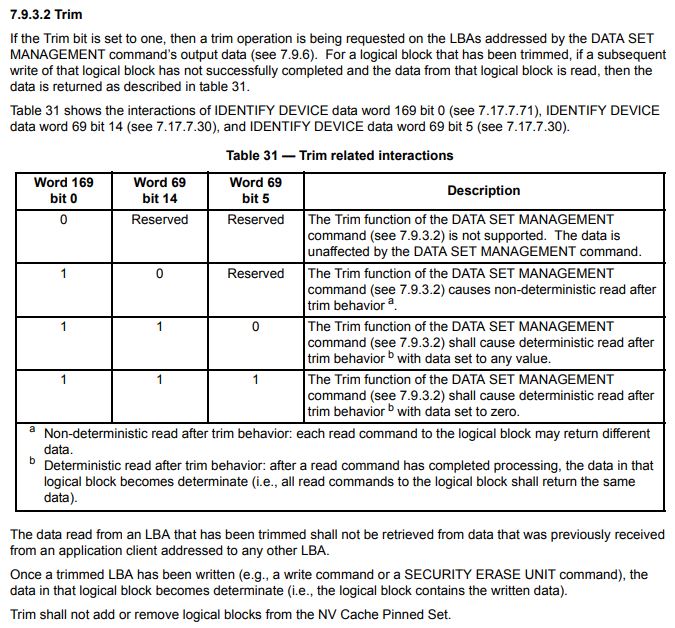The following thread would suggest that SMR drives make use of the ATA Trim command to optimise performance.
https://forum.hddguru.com/viewtopic.php?f=1&t=39014
Normally when new data are written to the drive, the data in the adjacent "shingles" needs to be cached and rewritten. However, if such data is marked as TRIM-med, then this operation becomes unnecessary. CMR drives don't need TRIM, so it would be an unnecessary overhead. This would suggest that one possible way to distinguish between CMR and SMR HDDs would be to examine Identify Device words 69 and 169. These data are reported by tools such as CrystalDiskInfo.

https://forum.hddguru.com/viewtopic.php?f=1&t=39014
Normally when new data are written to the drive, the data in the adjacent "shingles" needs to be cached and rewritten. However, if such data is marked as TRIM-med, then this operation becomes unnecessary. CMR drives don't need TRIM, so it would be an unnecessary overhead. This would suggest that one possible way to distinguish between CMR and SMR HDDs would be to examine Identify Device words 69 and 169. These data are reported by tools such as CrystalDiskInfo.

